(June 2011) “I was attacked today when I tried to protect some foreigners.” The Facebook message arrived in my inbox early afternoon Pacific time. It was evening in Cairo on Feb. 4, the pivotal “Day of Anger” that would ultimately lead to the downfall of the regime. The young woman who sent the message was a graduate of the Adham Center for Journalism Training and Research at The American University in Cairo, which I ran for four years until 2009.
At that moment, pitched battles were underway in Tahrir Square and the streets of downtown Cairo, as pro-Mubarak thugs unleashed a wave of violence against the crowds of protestors—using Molotov cocktails, rocks, machetes, and even guns—which would claim almost 400 lives.
“A strange looking woman started yelling in the street when she saw two foreigners,” my former student told me. “She kept saying ‘These are Israelis. Kill them. These are foreigners. They are ripping off our country.’ Around 10 men grabbed them. I was with a judge and we started yelling at the people. I intentionally started shouting at the woman to distract the men. She ended up throwing stones at me!! I guess we are at war with the regime right now.”
I had covered scores of wars and revolutions in my thirty years as a reporter and heard many such first-hand accounts. The difference this time was that I was 7,000 miles away. For 18 days, I had a digital front-row seat to the revolution, played out in real-time in an avalanche of e-mails, Tweets, Facebook postings, and Skype exchanges with Adham Center graduates and former instructors, as well as professional journalists and bloggers who had participated in the Center’s external training programs. In the process, I witnessed the way in which Arab reporters are adapting the ideals of American-style journalism to the realities of the region’s tumultuous political landscape.
“It is a way of bearing witness to these historic events,” said Abdallah Hassan of his work shooting footage of the demonstrations for Time.com. “I guess I am there as an observer- participant in some sense. We all want freedom, justice, and democracy. Everyone deserves that.” Hassan, who has graduate journalism degrees from AUC and Columbia and had just completed a Reuters fellowship at Oxford, found himself facing a disconnect between the Western journalistic ideals he had learned in the classroom and the reality on the streets of his country. “Being a completely detached reporter doesn’t seem like the moral thing to do on a personal level.”
He was not alone. “I’m not reporting because I can’t be detached. I’m pro the democracy movement with all my heart,” said Sara El-Khalili, the woman who sent the Facebook note about being attacked. A graduate of the center, she was now teaching journalism at AUC.
I messaged Pakinam Amer, another Adham grad, and asked whether she was reporting or carrying a banner with the protestors. “In the square, albeit w/o a flag,” she tweeted back. “Working as well. This revolution has moved me. Been supportive since Jan25. Can’t explain. All new to me.”
That sense of belonging to the revolution bore out the results of a survey I had conducted a few years before that found 75 percent of Arab journalists felt it was their mission to drive political and social change.
Like so many other Egyptian reporters, science journalist Nadia El-Awadi found herself overcome by emotion as the protestors stood up to the violent onslaught by the pro-Mubarak gangs. “I have cried my heart out today. So happy we stood our ground and didn’t let our martyrs down,” she declared in a tweet.
The older Adham alums who are the role models for these young journalists were likewise caught up in the emotion. Columnist Mona El-Tahawi was a ubiquitous presence on American television screens, voicing outrage at the regime. Yosri Fouda, the host of an influential nightly current affairs program on a private Egyptian satellite channel and one of the first Adham alums, sent this tweet the day Mubarak was forced from office: “Wish I was in Tahrir Sq now but somebody has to present it to the world. Proud #Egypt #Jan25”.
Olfa Tantawi, a former reporter for Egyptian TV who is now finishing her Ph.D. at AUC, was struck by the differences between what she saw on television and the events she witnessed in Tahrir Square. “Everybody is there right now including my 70-year-old aunt. Despite the attacks and the fear we all feel safe and happy,” she wrote in a Facebook note mid-way into the protests.
But when she glimpsed the revolt through the prism of the very media that was the focus of her career, that euphoria dissipated. “Behind the safe doors of my house, suddenly it was a vacuum of fear. We had to watch the Egyptian media’s false propaganda,” while on the international satellite channels, “the intense focus is on the fights, the bloodshed and the terror. Suddenly in my safe warm home, I am worried, afraid and unsure.”
Links between Adham graduates and some of the international journalists who taught there proved vital when the story first broke. Abdallah Hassan was shooting in Tahrir Square for Craig Duff, director of multimedia at Time and a former Knight International Journalism Fellow at the Adham Center. Former faculty member Yasir Khan, now at Al Jazeera English, quickly linked several former students with Jazeera’s teams in Cairo when the protests began. And others of us connected former students with Canadian TV, Spanish news organizations, and the Australian media.
Much has been written about the role of social media in the Egyptian revolution. No one was more amazed than those of us who watched its early inroads in Egypt. Duff recalls a workshop he led in 2007. “I told the journalists that day that text and mobile service were likely to be a much more practical method of news dissemination than fancy web graphics and robust flash pages (even web video) which would reach only a small fraction of the population who had access to broadband,” he says. “But I could never have envisioned how true that was--and how I would greatly benefit, sitting in my office in midtown Manhattan, from the many mobile devices in all those hands in Tahrir Square.”
Several of the digital activists who would emerge as leading online voices of the protest were part of a group of influential bloggers we sent to the U.S. to cover the 2008 elections under a USAID-funded project called “Egypt Blogs America.” Among them was Wael Abbas, famous for sparking a national controversy by posting on YouTube footage of Egyptian police torturing a taxi driver.
Six months after the U.S. elections, we arranged for the bloggers to attend President Obama’s speech in Cairo. “It’s devastating that a man like Obama is coming to Egypt to reinforce the oppressive policies of President Hosni Mubarak,” Abbas wrote afterwards in a post on the project website. “It’s like beating 80 million Egyptians over the head - like saying we believe in democracy but not here.”
When the protests erupted, Abbas became a digital crossroads, providing a minute-by-minute account for his 20,000 Twitter followers, with those observations spreading virally to countless more.
Bloggers like Abbas, who straddled the line between political activism and journalism, were well aware of the dangers they faced. “I have been battling fatigue for not sleeping properly for the past 10 days, moving from one friend's house to another friend’s house, almost never spending a night in my home, facing a very well-funded and well-organized ruthless regime that views me as nothing but an annoying bug that it's time to squash will come,” the blogger Sandmonkey, another participant in the U.S. elections project, said in a posting as the violence by pro-Mubarak forces reached a crescendo.
“What’s next?” I asked him in a late-night direct message tweet. “Mubarak resigns. Omar Suleiman takes over interim government, only way out,” he replied. Moments later, he headed for Tahrir Square to deliver medical supplies to the injured. He never made it. He was intercepted by internal security, his car was destroyed, and he was briefly detained. His Twitter account was hacked, his blog, The Rantings of a Sandmonkey, pulled down, and his phone stolen. That set off a flurry of tweets among the blogging community as people tried to find out where he was being held.
He would re-emerge the following morning, defiant, revealing his real name publicly for the first time. Days later, Sandmonkey—aka Mahmoud Salem—posted a manifesto for a new opposition political party on his reconstituted blog.
“I couldn’t be more proud to be an Egyptian,” journalist Dina Basiony, both a graduate of the Adham Center and head of some of its external training programs, told me in a message after Mubarak stepped down. “Some people used to feel strange in their own country as if they didn’t belong to it, now they own their country. Some people used to feel alone, now a sense of community among the millions overwhelms our senses and our understanding.
"Justice, fairness, hard work, human dignity, democracy are not new to us. They’re the ABC of our faith, beliefs and culture. They were covered by dust for a while, but will be brighter than light from now on, inshaAllah [God willing]. That’s what we believe in, that’s what we deserve.”
For our former students, the challenges ahead are huge. The politics of the coming months and years will be messy. Journalism will undergo a dramatic evolution. It will be a challenging time for them and a fascinating period for those of us with two degrees of separation from the revolution.
Everything has changed. As blogger Wael Abbas succinctly summed up in a tweet, “Mubarak has left the building!”


